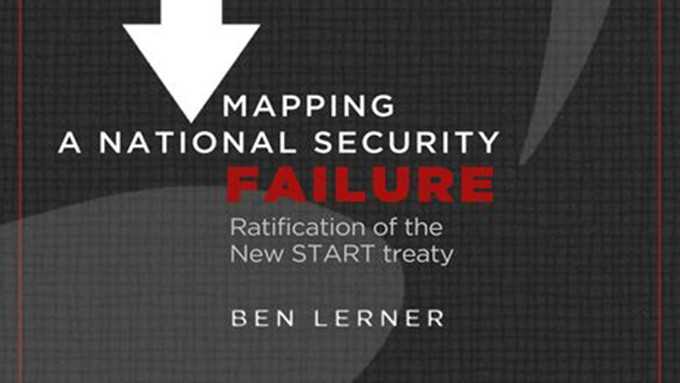Mapping a National Security Failure: Ratification of the New START Treaty

Some statements from senior administration officials have gone so far as to call into question whether U.S. nuclear forces will continue to consist of a triad altogether, let alone one receiving the requisite modernization. The Washington Times reported in September, 2011 that the Obama administration in recent months has quietly undertaken a so-called “mini-NPR” (Nuclear Posture Review), the apparent purpose of which is to seek even lower levels of deployed nuclear weapons than what New START outlines, including perhaps through unilateral U.S. cuts.[157] As White House arms control coordinator Gary Samore explained in May, 2011, according to The Washington Times:
We’ll need to do a strategic review of what our force requirements are, and then, based on that, the president will have options available for additional reductions…we’ve reached the level in our forces where further reductions will raise questions about whether we retain the triad, or whether we go to a system that only is a dyad.[158]
This sentiment was echoed by Adm. Mike Mullen, Chairman of the Joint Chiefs of Staff, in September, 2011: “I think a decision will have to be made in terms of whether we keep the triad or drop it down to a dyad.”[159]
The future of the nuclear modernization agenda will likely be further placed in jeopardy by ongoing efforts to reduce the federal deficit at the expense of national security programs. Under the debt ceiling compromise agreed to by the House and Senate and signed by President Obama in early August 2011, $400 billion out of $1 trillion in immediate spending cuts would come out of the Department of Defense budget.[160] However, the debt ceiling agreement also provided for a congressional “super-committee” to find an additional $1.5 trillion in spending cuts or tax increases—if the super-committee is unable to reach an agreement by late November, 2011 (which, at the time of this writing, remains uncertain)—the debt ceiling agreement triggers a “sequestration” mechanism that would result in automatic defense cuts of $500 billion.[161] Sources on Capitol Hill have confirmed that such cuts, if brought about, could conceivably have a negative effect on the modernization of the nuclear stockpile, infrastructure, and triad of strategic delivery vehicles agreed to during the New START ratification process.
Rationalizing Ratification
There was never any real doubt that all of the Democratic members of the Senate would vote in favor of ratification, both in order to support President Obama’s substantive agenda on nuclear weapons and U.S.-Russia relations, and to give him a key foreign policy victory. Most of the political analysis of the New START ratification process therefore centered on whether enough Republican Senators could be persuaded to vote in favor of the treaty.
- Trump’s Election Was a Win in the Fight to Keep Gitmo Open - January 4, 2017
- NDAA and the Counter-Drone Challenge - December 23, 2016
- NDAA Takes On Counter-Drone Challenge - December 8, 2016
